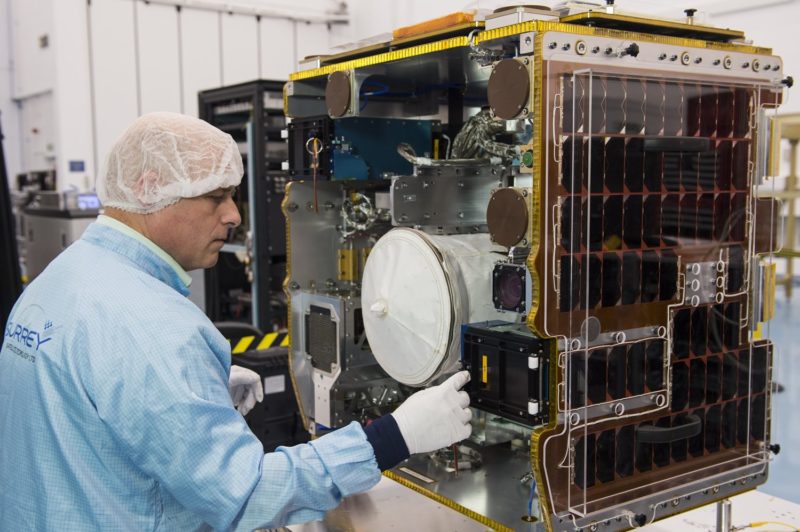RemoveDebris to Begin Experimental Phase of Mission

Surrey Satellite Technology (SSTL) has confirmed the successful commissioning in-orbit of the RemoveDebris spacecraft, which was deployed from the International Space Station (ISS) on June 20, 2018. Spacecraft operators at SSTL have just completed a series of tests and operations to confirm the functionality of key operating systems such as power management, communications, propulsion, attitude control, and on-board computing. The satellite is now ready for the experimental phase of the mission to begin.
The RemoveDEBRIS mission will perform four Active Debris Removal (ADR) experiments, beginning in October with the deployment of a net developed by Airbus in Bremen, which has been designed to capture a target cubesat. The mission is then scheduled to test a vision-based navigation system from Airbus in Toulouse and CSEM in Switzerland, that uses 2D and 3D Light Detection and Ranging (LIDAR) technology to track a cubesat released from the main spacecraft. Early in 2019, a harpoon developed by Airbus in Stevenage will be fired at 20 meters a second to penetrate a target made of composite material. Finally, the RemoveDEBRIS craft will deploy a large drag sail to speed de-orbit into the Earth’s atmosphere.
The RemoveDEBRIS satellite was designed, built, and manufactured by a consortium of pace companies and research institutions, led by the Surrey Space Center at the University of Surrey and co-funded by the European Commission (EC).